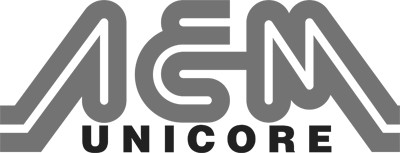Home » Technology » Annealing » Overview and the benefit of Unicore
Overview and the benefit of Unicore
Annealing of DG or DUO type Unicores – An Overview:
Background:
Grain Orientated Electrical Steel has an ordered metallurgical grain structure which is responsible for the low electrical loss of these types of steels. When the steel is subjected to stresses during the manufacturing processes required to form a core, this grain structure is damaged and the core loss increases. The amount by which it increases is referred to as the “destruction factor”. After the core is formed, the grain structure can be repaired by annealing which reduces the core loss.
One disadvantage when using the old traditional method of manufacturing wound cores, for example the ‘Tranco’ method, is that the cores MUST be annealed to:
- remove stress caused by the manufacturing process which stresses the COMPLETE core
- ensure the final rectangular shape is maintained (without annealing the core would significantly revert to its original circular shape).
The advantage of the Unicore is that:
- Unicores remain in the rectangular processed shape without the need for annealing
- unlike other methods of wound core production, in which, the complete core is stressed, Unicore folds the CRGO strip to form corners and therefore only stresses a very small proportion of the steel at the folded corner location.
- Hence in some cases where a slightly higher level of loss can be accepted, Unicores can be used unannealed. Alternatively Unicores can be annealed when the lowest losses are required.
Destruction factors and the effect of annealing:
The best result after annealing for all types of Distributed Gap wound cores (regardless of the method of manufacturing) is:
- To achieve core loss very close to the raw material loss for SINGLE Phase cores
- To achieve losses about 12 to 17% higher than the raw material for THREE Phase cores. Refer to the attached PDF document “A Note on Losses in Evans Type Three Phase Cores” for a full explanation of this phenomenon.
- Note that “Laser” etched steels should not be annealed because the effect of the laser modification of the grain structure of the steel is lost if the core is annealed resulting in higher core losses.
Annealing Unicores:
- The purpose of annealing in Unicores is primarily to repair the damaged grain structure of the electrical steel in the corners of the core as the rest of the core is relatively unaffected.
- With Unicore, generally as the size increases or more accurately, as the Mean Path Length of the core increases, the percentage of stressed steel decreases (i.e. the percentage of steel in the corners compared to the total steel in the core decreases) and therefore the destruction factor also decreases. At some point, as the Unicore size gets larger and larger, the destruction factor becomes very small and there is little to be gained by annealing. At this point the time and cost of annealing becomes unwarranted.
- Please review the attached PDF document “Annealing” for a full explanation.
- In summary, for any Unicore, the percentage reduction in core loss from annealing reduces as the size of the core increases.
- For ALL Single Phase Unicores, the losses after annealing should be close to the raw material losses and for Three Phase Unicores the losses will be about 12 to 17% higher than the raw material losses.

